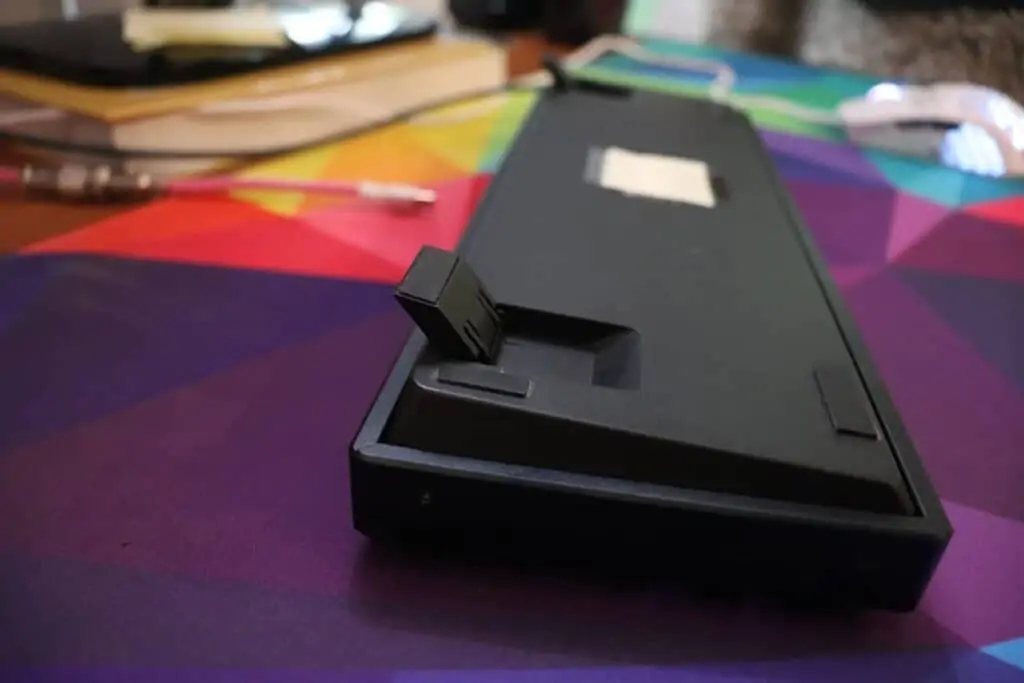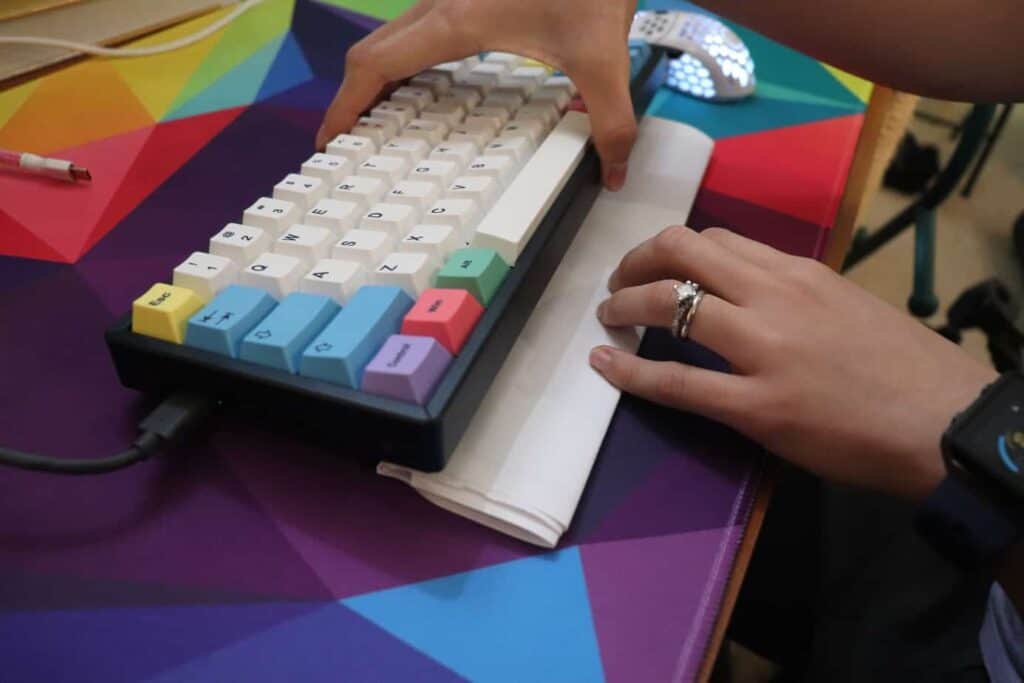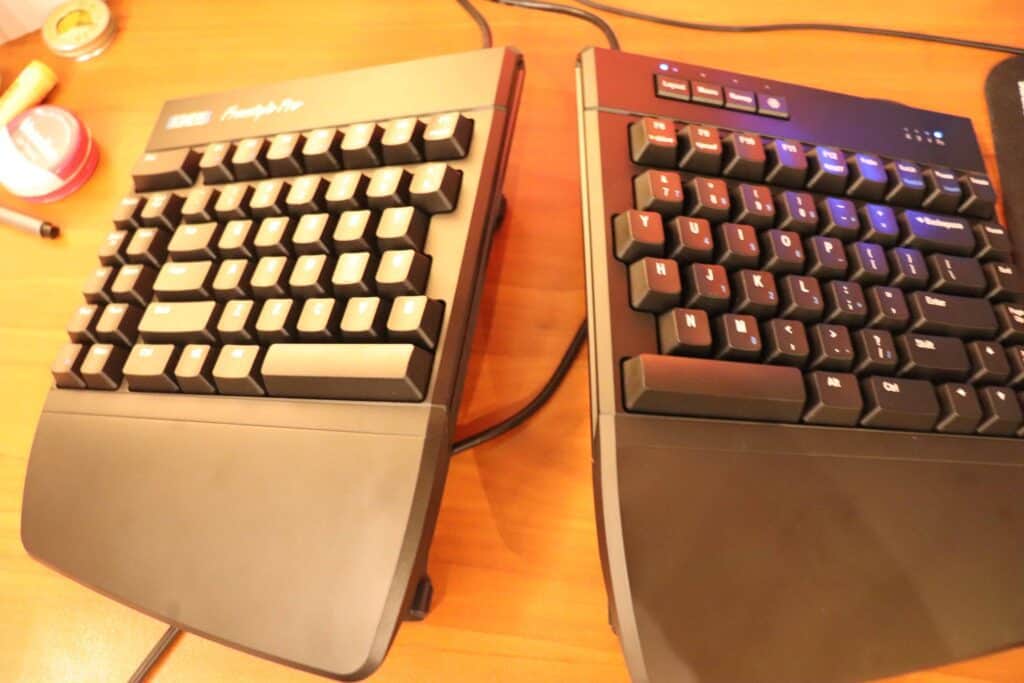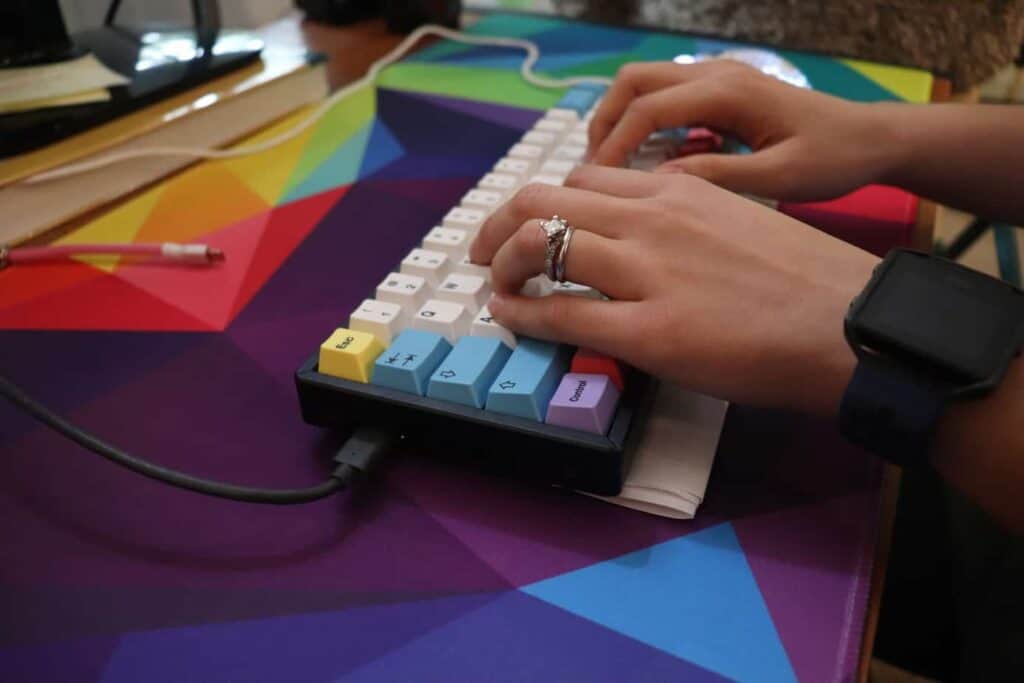Typing on keyboard every day can be quite uncomfortable on my wrists and arms, so I’ve always wondered if using a different typing angle would help with wrist pain and longevity.
Out of curiosity and concern for my bodily well-being, I researched if having the keyboard flat on my desk or tilted slightly is better for ergonomics. Here’s what I found.
Typing with your keyboard on a flat surface is better than angled. Using the keyboard kickstands increases the stress on your wrists and chance of injury. As a matter of fact, it’s better to have the keyboard angled away from you to improve ergonomics.
We’ll explain why an inverted typing angle is better and go over what steps you can take to improve your current workstation.
The Typing Positions: Flat and Angled

There are two main typing positions, flat and angled. Almost all keyboards come with kickstands on the back that you can flip up to increase the typing angle. Some higher end keyboards even have multiple kickstand adjustment settings so you can really adjust the typing to angle to what’s the most comfortable for you. Let’s talk about some of the benefits of each typing position and come to a conclusion about which one is better.
Angled Keyboards are More Intuitive
Using a keyboard with the feet up can feel much more intuitive for a lot of people. With an angled keyboard it is much easier to see the keys, which is understandable. It’s human nature to want to be able to see what your hands are doing. A flat keyboard makes it more difficult to see the key legends and our fingers pressing the keys.
When you first learn to type, you are always told to memorize where the keys are so you can develop muscle memory. This style of typing improves efficiency since you’re able to look at the screen instead on your keyboard. Using your keyboard at an angle can be used as a crutch if you never learned how to type without looking at your hands.
Flat Keyboard is Better for Ergonomics
The downside to an angled keyboard is the amount of stress you put on your wrists. When typing you want your wrists to be neutral, as soon as you introduce and angle to your keyboard, your wrists are no longer neutral. The extra stress you put on your wrists can lead to wrist pain and carpal tunnel which are not fun at all. Because of this, a flat keyboard is better in the long run to reduce chance of injury and make typing a better experience.
Why Do All Keyboards Have Kickstands?

If using a kickstand is so bad for your wrists, why do almost all keyboards have kickstands? Well, as we mentioned before, an angled keyboard can feel much more intuitive and easier to use since it is easier to see the keyboard, which leads to a large number of people using the kickstands. In addition, the majority of people don’t really know a flat keyboard is better for ergonomics. The keyboard manufacturers simply fill the demand of the public, so if people expect a keyboard to have adjustable kickstands, they are going to fill that need. Hence, why so many keyboards have kickstands even though it’s not good for the user.
An Inverted Typing Angle is the Best
In my research, I was surprised to find that there is a better typing angle than flat, the best position is actually an inverted angle. This was quite unexpected because the kickstands on keyboards actually angle the keyboard towards you, when in reality it’s better to angle the keyboard away from you. Who would’ve thought? The negative typing angle helps you hold the neutral wrist position and decreases the extension of your fingers which is better for your wrists and hands over the long term.

To try this out for myself, I took five pieces of paper and folded them up. Then I slid the folded paper bundle under my keyboard to slightly prop it up so I could try this inverted typing angle. The results? It felt very strange, but I could definitely see the benefits of using this typing style. My paper solution was quite low effort, so having a better “kickstand” may improve your results. This typing angle may not be for everybody, but I definitely recommend you try it out. I typed out this entire article using the inverted typing angle, and the more I use it, the better it feels.
Other Ways to Improve Ergonomics
We talked about how an inverted typing angle is better for typing, but what about other ways to improve ergonomics? We’ll go over the very basics about how changing up your workstation can lead to drastic improvements over the long term.
Adjust Chair, Desk, and Monitor Height
Adjusting your chair height, desk height, and monitor are all great places to start to improve ergonomics. These relatively small and easy changes can lead to drastic improvements in your posture. The rule of thumb is to keep everything at a 90 degree angle. So, you want your chair to be high enough to keep your knees and hips at 90 degree angle. You also want your desk to be high enough to keep your elbows perpendicular and your monitor to where you are looking straight ahead of you. We have a more detailed guide about ergonomic workstations here.
Split Keyboards are Great

I feel it’s worth mentioning that ergonomic keyboards are the next step if you really want to up your ergo game. Split keyboards are much different than a standard keyboard since they are optimized for ergonomics and comfort. Ergonomic keyboards are usually split down the middle and come with a ton of different adjustment positions to improve ergonomics. Keep in mind, split keyboards can feel really strange when using them at first, so there is definitely a learning curve to using a split keyboard. There is a study that shows that using an ergonomic keyboard is better over the long run.
Different typing styles can make transitioning to a split keyboard more difficult. For example, I type in the traditional touch-typing style that you learn in school, where my wife uses a unique touch-typing hybrid style because she taught herself how to type. When first using a split keyboard, I adjusted much faster than her because I was accustomed to using on the left side of the keyboard with my left hand instead of reaching to the other side of the keyboard.
Conclusion

We talked about the different typing positions, flat and angled, and discussed the benefits of each typing position, such as visibility, ease of use, and ergonomics.
We discovered that typing on a flat keyboard is better for your wrists and hands, but an even better typing position is with the keyboard angled at a negative incline. The negative incline keeps your wrists in a neutral/straight position and decreases the amount you need to stretch your fingers for each keystroke.
We also went over some other ways to improve ergonomics such as using a split keyboard or adjusting your chair height, computer monitor, and desk to optimize your workspace for comfort and longevity.
Happy Typing!
